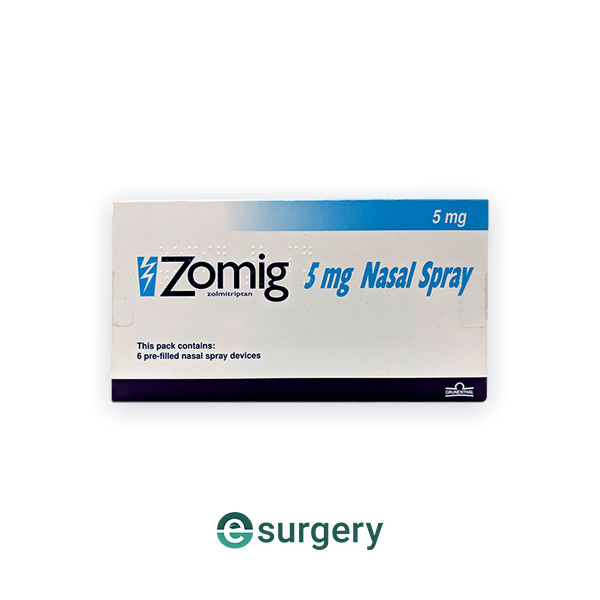
A guide to managing different types of migraine
Most of us have to suffer through mild headaches now and again, but that’s nothing much compared to a migraine. Those familiar with the condition know that migraines can be genuinely debilitating – sometimes for hours at a time. Frequent sufferers can find their quality of life seriously dampened by the attacks, which can be triggered by everyday stimuli.
There isn’t a definitive cure for migraines (yet!), but that’s no reason to despair. Nowadays, migraines can be effectively managed with a little know-how and with the right treatments to hand, in combination with some home remedies. So let’s examine the condition, and find out how we can handle these headaches in the most pain-free way possible.

What Triggers A Migraine?
Migraines can be triggered by a wide variety of factors that will vary from person to person. These triggers can generally be categorised into types, which can often overlap and interact with one another. Different types of migraines can generally have similar triggers.
Hormonal triggers include the menstrual cycle and menopause.
Emotional triggers can centre around distressing or destabilising feelings and moods, such as:
- Stress and anxiety
- Excitement or a nervous tension
- Shock
- Depression
Physical triggers can stem from our bodily health. Examples include:
- Tiredness and poor quality sleep
- Poor posture and neck or shoulder tension
- Strenuous exercise you aren’t prepared for
- Low blood sugar (Hypoglycaemia)
- High blood pressure
Environmental triggers from your surroundings, with common influences being:
- Bright lights or flickering screens
- Smoke or strong scents
- Changes in humidity or temperature
- Loud noises
Dietary triggers can set off migraines, such as:
- Irregular eating patterns
- Dehydration
- Alcohol and caffeine consumption
- Foods and drinks containing nitrates or tyramine
With such a range of possible triggers, you might find it useful to keep a migraine diary or migraine tracker. Migraine diaries note the symptoms and duration of your attacks, but also any potential triggers and different types of migraines. For example, you might note down what you had to eat or drink that day, how many hours of sleep you had, whether or not you were exposed to bright lights, etc. Over time, you’ll be able to develop a personalised profile of your triggers, which can help you to avoid the offending stimuli and prepare appropriately.
Of course, it’s not just the causes that can vary. In addition to types of triggers, there are types of migraine, each with different symptoms, frequencies, and rarity.
Migraine Without Aura
Migraines without aura are believed to be the most common type of migraine, affecting anywhere between 70 – 90% of migraine sufferers. For some people, migraines without aura will happen a couple of times a year at most. In more severe cases, they can occur multiple times a week, different types of migraines will be experienced differently depending on the sufferer.
Features of migraine without aura can include:
- An intense, throbbing headache on your one side of the head that intensifies with activity
- A sense of nausea, which in some cases can lead to vomiting
- An increased sensitivity to light and sound
- Abdominal pain and diarrhoea
- Sweating and changes in body temperature
- Disrupted concentration
Migraines without aura have a typical duration of 4 – 72 hours.
Migraine With Aura
Migraines with aura are less widespread, occurring in 10 – 30% of migraine sufferers. ‘With aura’ refers to an additional set of neurological symptoms, generally classified as visual disturbances.
These visual disturbances can occur prior to the headache itself, as a sort of warning sign of the migraine to come.
The symptoms of a migraine with aura can include:
- Blind spots, which can be outlined with geometric designs
- Zig zag lines that cross over the visual field
- Flashes of light and shimmering points
- Tunnel vision
A migraine without aura can also have non-visual effects, such as:
- Numbness
- Pins and needles, a tingling sensation
- Dizziness or vertigo
- A feeling of weakness on one side of the body
In rarer cases, people can become confused, experience changes to memory, and even lose consciousness.
The aura symptoms can develop over a 5 to 20 minute period and last for around an hour.

Migraine Aura Without Headache
Also known as a silent or painless migraine, migraine aura without headache is one of the rarer kinds of migraine. The attack mimics the symptoms of aura migraines, but the headache simply isn’t present. Although migraine aura without headache is certainly less painful than the previously mentioned types, it can still be debilitating due to visual disturbances, nausea, bodily weakness, confusion and dizziness.
Other Types Of Migraine
Unfortunately, the different types of migraine varieties don’t end there!
Menstrual migraines are one of the different types of migraine that affect women just before, or during, their periods. It’s likely caused by a drop in the hormone oestrogen. Treatments for menstrual migraine often take the form of anti-inflammatory painkillers, oestrogen supplements, or the combined oral contraceptive pill, which can be used to maintain stable oestrogen levels.
Other variants include:
- Vestibular migraine, a migraine primarily characterized by strong sensations of vertigo, but also sensitivities to light, smell and touch.
- Hemiplegic migraine, a migraine that induces a weakness and numbness on one side of the body, in addition to confusion, visual problems or speech difficulties. This can be very concerning, as it could be mistaken for a stroke.
- Primary Exercise Headache, a headache syndrome specifically triggered by exercise.
Are There Home Remedies For Migraines?
Frequent migraine sufferers might be tempted to fight their condition at home with natural or herbal remedies. Could these be effective against different types of migraines, or is it just wishful thinking?
The truth is that herbal home remedies to treat migraine have mixed results at best and are dangerous at worst. Some studies suggest that the herb Feverfew could have a preventative effect [1], while others failed to show any meaningful treatment from the plant [2]. Other natural remedies such as Butterbur, which have been historically claimed to help with migraines, are actually capable of causing liver damage and organ failure [3]. So if you ever see unlicensed Butterbur products marketed as migraine remedies – stay away!
Some sufferers make use of plant oils, such as peppermint or lavender, to ease their discomfort during an attack. Though unlikely to cause any harm, these oils aren’t clinically proven to relieve different types of migraines.
In truth, the most effective home remedies for different types of migraines come in the form of health habits – exercise, solid sleep patterns, and an awareness of your triggers via a migraine diary.

Can Migraines Be Treated With Medication?
Nowadays there are plenty of effective medical treatments for migraine available for prescription.
Obviously, over-the-counter painkillers such as Paracetamol have their place for pain relief. However, these might not cut it for migraine pains. In addition, overusing these painkillers can actually worsen migraines in the long run [4]! If you’re looking for a more specialised medication, Triptan medications might be just the solution, although they may not work for different types of migraines and you should always consult your GP or doctor before taking any new medication.
Triptan Medications
Triptan medications include medicines such as:
Triptans are a medicine group that work by reducing the widening of the blood vessels in the brain. The widening of these vessels is thought to be a contributing factor to migraines and associated symptoms. By preventing this, Triptans can help to relieve the pain of the headache, associated nausea and light and sound sensitivities that come with different types of migraines.
Triptans aren’t preventative. They are meant to be taken as the migraine attack begins, typically with a glass of water. You can usually take another Triptan tablet if the migraine hasn’t subsided after 2 hours, but you shouldn’t take more than two tablets within a 24 hour period. Don’t take more than recommended or prescribed – this could actually make migraines worse.
In addition to tablets, Triptans are also available as nasal sprays, such as Zomig Nasal Spray. Just like the tablets, this medication is effective at relieving symptoms once the migraine attack has begun.
Propranolol Tablets For Migraine Prophylaxis
Triptans aren’t the only medications prescribed for migraines. Beta blockers such as Propranolol Tablets can reduce the severity and frequency of migraine headaches. In addition, this medication is used to treat high blood pressure and associated health conditions such as angina pectoris.
These tablets can be very effective at treating migraines, but you should never take more than is prescribed to you by your doctor, as an overdose can be severely toxic.

Can I Buy Migraine Treatment Online?
Triptan medications and Propranolol tablets are all available online through licensed UK pharmacies such as e-Surgery. We’ll help you manage your migraines with Sumatriptan tablets for as little as £9.95, complete with next-day delivery at the click of a button.
Sources
- Efficacy Of Feverfew As Prophylactic Treatment Of Migraine | PubMed
- Herbal Medicines In Migraine Prevention Randomized Double-blind Placebo-controlled Crossover Trial Of A Feverfew Preparation | PubMed
- Consumers Are Advised Not To Take Unlicensed Butterbur (Petasites hybridus) Herbal Remedies | MHRA
- Migraine – Treatment | NHS
Further Reading
- Migraine advice | NHS
- Types of Migraine | The Migraine Trust
- Rare and extreme types of migraines | Healthline













